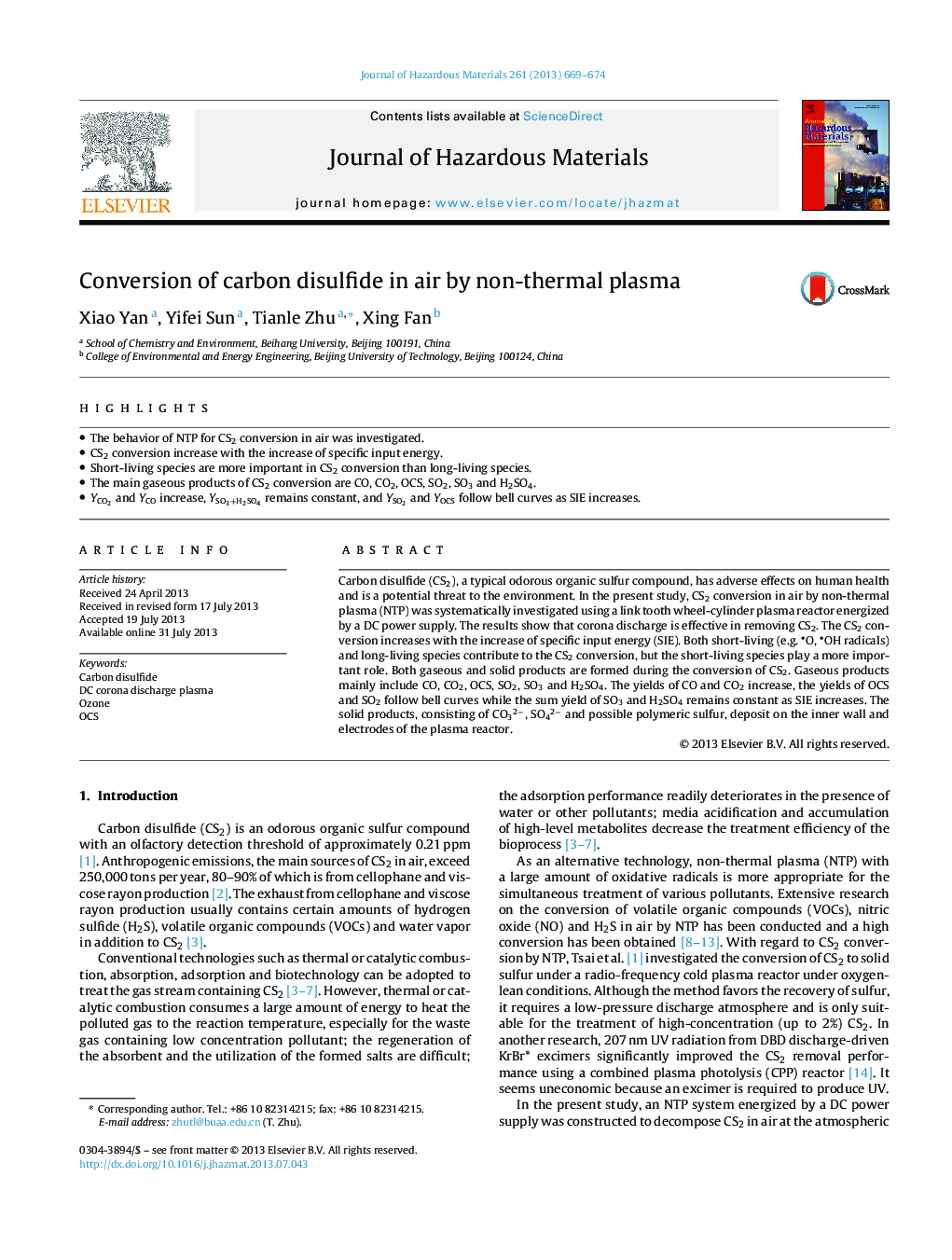| Article ID | Journal | Published Year | Pages | File Type |
|---|---|---|---|---|
| 6972213 | Journal of Hazardous Materials | 2013 | 6 Pages |
Abstract
Carbon disulfide (CS2), a typical odorous organic sulfur compound, has adverse effects on human health and is a potential threat to the environment. In the present study, CS2 conversion in air by non-thermal plasma (NTP) was systematically investigated using a link tooth wheel-cylinder plasma reactor energized by a DC power supply. The results show that corona discharge is effective in removing CS2. The CS2 conversion increases with the increase of specific input energy (SIE). Both short-living (e.g. O, OH radicals) and long-living species contribute to the CS2 conversion, but the short-living species play a more important role. Both gaseous and solid products are formed during the conversion of CS2. Gaseous products mainly include CO, CO2, OCS, SO2, SO3 and H2SO4. The yields of CO and CO2 increase, the yields of OCS and SO2 follow bell curves while the sum yield of SO3 and H2SO4 remains constant as SIE increases. The solid products, consisting of CO32â, SO42â and possible polymeric sulfur, deposit on the inner wall and electrodes of the plasma reactor.
Keywords
Related Topics
Physical Sciences and Engineering
Chemical Engineering
Chemical Health and Safety
Authors
Xiao Yan, Yifei Sun, Tianle Zhu, Xing Fan,
